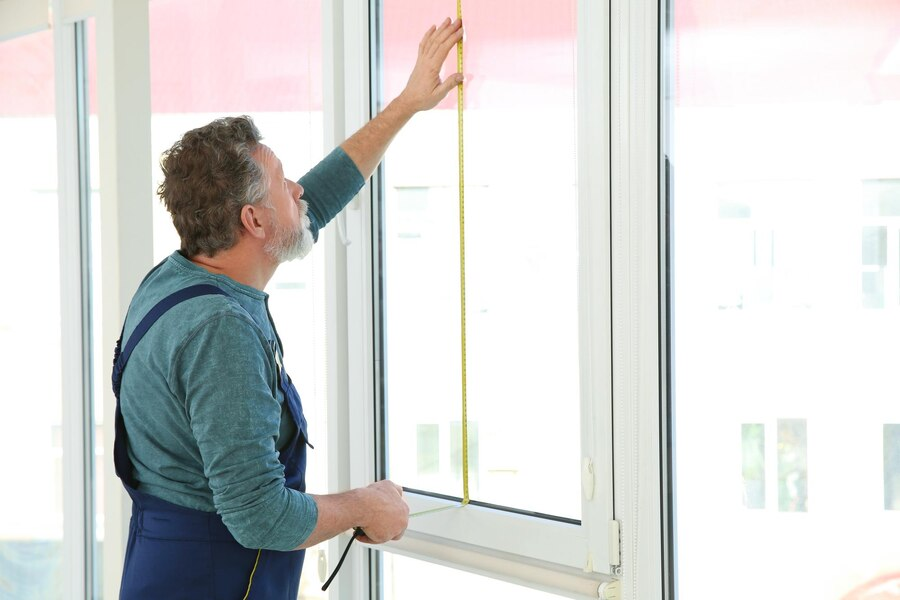
Replacement Windows Cost Breakdown
Thinking about replacing your windows but unsure about the cost? Here’s a quick breakdown: the price of new windows can vary depending on the material, size, and style you choose. Vinyl windows, for instance, are more affordable, while wood or fiberglass options tend to be pricier. Installation costs are another factor, often determined by the number of windows and any custom work required. Don’t forget to factor in energy efficiency ratings, which could save you money in the long run. All in all, costs generally range from a few hundred to several thousand dollars per window.
Table of Contents
Toggle- Material Matters: Choosing the Right Window Frame
- Window Size and Style: Bigger Isn’t Always Better
- Installation Costs: Factors to Consider
- Energy Efficiency: A Smart Investment
- Custom Work and Design Upgrades
- Warranty and Aftercare: Hidden Value
- Seasonal Discounts and Promotions
- Long-Term Savings: More Than Just the Price Tag
- Conclusion
- Podbean
- Spreaker
- Podcasters
- Podomatic
- Soundcloud
Material Matters: Choosing the Right Window Frame
The material you choose for your window frames—vinyl, wood, fiberglass, or aluminum—plays a big role in the overall cost. Vinyl is usually the most affordable and low-maintenance option, while wood offers a classic look but tends to be more expensive due to its natural beauty and insulation properties. Fiberglass combines durability and energy efficiency, landing it in the mid-to-high price range. Aluminum, while durable and sleek, is generally more costly and less energy-efficient. Balancing aesthetics, longevity, and budget is key when selecting the right material.

Vinyl Windows: The Budget-Friendly Choice
Vinyl windows are popular for their affordability and minimal maintenance needs. Made from PVC, they resist moisture, rot, and corrosion, making them ideal for various climates. While they may lack the elegance of wood, they come in a range of colors and finishes to suit different styles. Vinyl’s cost-effectiveness and easy upkeep make it a go-to option for homeowners looking for a balance between price and performance.
Wood Windows: The Classic Upgrade
Wood windows provide a timeless look that adds warmth and charm to any home. While they are more expensive, their natural beauty and excellent insulation properties make them a premium choice. Wood requires regular maintenance, such as painting or sealing, to prevent warping or rot. Despite the higher upfront cost, many homeowners appreciate the aesthetic appeal and long-term value that wood windows bring.
Fiberglass Windows: The Balanced Performer
Fiberglass windows offer a great combination of durability, energy efficiency, and style, sitting in the mid-to-high price range. They’re more resistant to weather and temperature changes than wood or vinyl, reducing expansion and contraction issues. Fiberglass frames can also mimic the look of wood without the maintenance hassles. For those willing to invest a bit more, fiberglass provides a lasting, low-maintenance solution with great thermal performance.
Aluminum Windows: The Modern Contender
Aluminum windows are sleek and modern, offering strength and durability for a variety of architectural styles. However, they tend to be more costly and less energy-efficient, as aluminum is a good conductor of heat and cold. They work well in warmer climates or where a slim profile is needed for larger window expanses. Aluminum windows are a good choice for those prioritizing a contemporary look and minimal frame bulk.
Choosing the Right Material: Aesthetic Meets Budget
Selecting the right material for your windows involves weighing factors like budget, style, and long-term maintenance. Vinyl is ideal for cost-conscious buyers, while wood suits those who value natural beauty. Fiberglass strikes a balance with its durability and energy efficiency, and aluminum offers a sleek, modern look. Consider the unique needs of your home, climate, and personal taste to find the perfect match for your windows.
Window Size and Style: Bigger Isn’t Always Better
The size and style of your windows will directly impact the cost of replacement. Standard sizes are generally less expensive than custom or oversized windows, which may require special ordering or fabrication. Similarly, simple, single-hung or double-hung windows are often cheaper than more elaborate styles like bay, bow, or casement windows. The more glass and hardware required, the higher the price. Consider the architectural style of your home and your personal taste when deciding, but remember that these choices will affect your budget significantly.
Installation Costs: Factors to Consider
Installation costs can vary widely depending on several factors, including the number of windows being replaced, the type of windows, and the difficulty of the installation itself. For instance, windows on higher floors, in hard-to-reach places, or with non-standard sizes may require special equipment or more labor, driving up costs. Some contractors charge per window, while others may offer a flat rate for larger projects. It’s essential to get multiple quotes from reputable installers and ask about any potential hidden costs, such as disposing of old windows or repairing surrounding areas.
Energy Efficiency: A Smart Investment
While energy-efficient windows may have a higher upfront cost, they can save you money in the long term by lowering your heating and cooling bills. Look for windows with features like double or triple glazing, low-emissivity (Low-E) coatings, and gas fills between panes, which improve insulation. The U-factor and Solar Heat Gain Coefficient (SHGC) are also important metrics to consider. These features add to the cost initially, but they can increase the comfort of your home and reduce your energy expenses significantly, making them a smart investment for many homeowners.
Custom Work and Design Upgrades
Adding custom design elements, such as decorative grilles, unique shapes, or specialty glass, can enhance the look of your windows but also increase their cost. Custom windows that are tailored to fit unusual openings or complement specific architectural styles usually come with a premium price. Similarly, upgrades like impact-resistant glass or special coatings for soundproofing or privacy can drive up costs. While these features can add character and value to your home, it’s crucial to weigh their benefits against your budget to avoid any surprise expenses.
Warranty and Aftercare: Hidden Value
The type and duration of the warranty offered with your replacement windows can also impact the total cost. A higher price might come with a longer, more comprehensive warranty that covers defects in materials, installation, or even accidental damage. While warranties often add a bit to the upfront cost, they can provide peace of mind and save you money on future repairs or replacements. Understanding what each warranty covers, including labor and parts, can help you decide if a higher initial investment is worthwhile for the potential long-term savings.
Seasonal Discounts and Promotions
Timing your window replacement project can lead to significant savings. Many window companies offer seasonal discounts or promotions during slower periods, such as late winter or early spring. Buying in bulk or taking advantage of package deals can also help cut costs. It’s a good idea to keep an eye out for local sales events or to ask your contractor about any upcoming promotions. Additionally, some energy-efficient windows may qualify for government rebates or incentives, which can further reduce the overall cost.
Long-Term Savings: More Than Just the Price Tag
While the initial cost of replacement windows might seem high, consider the long-term savings they can provide. Besides improving energy efficiency and potentially lowering utility bills, new windows can increase your home’s resale value and curb appeal. Modern windows also require less maintenance, saving you time and money on repairs or replacements down the road. By thinking beyond the upfront expense, you’ll see that quality replacement windows can offer substantial financial benefits over the life of your home.
- Energy Efficiency Reduces Costs: New windows improve insulation, reducing heating and cooling costs, which can lead to substantial savings on your utility bills over time.
- Boosted Home Resale Value: Upgrading to modern windows can enhance your home’s aesthetic appeal, increasing its market value and attractiveness to potential buyers.
- Lower Maintenance Requirements: Newer windows are designed to be more durable and require less frequent repairs or upkeep, saving you both time and money in the long run.
- Enhanced Comfort and Protection: Improved window technology can provide better noise reduction, UV protection, and weather resistance, contributing to a more comfortable living environment.
- Long-Term Financial Benefits: Despite the initial expense, quality replacement windows offer enduring savings and add value over the years, making them a smart investment for homeowners.
Conclusion
When considering replacement windows, understanding the costs involved is key to making an informed decision. From the type of window material and style to the size of the installation and any additional features, each factor plays a role in the overall expense. While it can be tempting to choose the lowest-cost option, investing in high-quality windows can offer long-term benefits, such as improved energy efficiency, increased home value, and enhanced comfort. By weighing the costs against the advantages, homeowners in Cleveland can find the right balance to meet their needs and budget.
If you’re a homeowner in Cleveland, Ohio, and you’re ready to explore your options for replacement windows, EZ Window Solutions of Cleveland is here to help. Our team is dedicated to providing a transparent, stress-free experience, offering expert guidance and a wide range of quality window options to suit any home. Reach out to us today to learn more about our offerings and receive a detailed quote tailored to your specific needs.
Lorem ipsum dolor sit amet, consectetur adipiscing elit. Ut elit tellus, luctus nec ullamcorper mattis, pulvinar dapibus leo.
Podbean
https://lupemontgom.podbean.com/e/replacement-windows-cost-breakdown-in-cleveland-ohio/
Spreaker
https://www.spreaker.com/episode/replacement-windows-cost-breakdown-in-cleveland-ohio–62086638
Podcasters
https://spotifyanchor-web.app.link/e/zHyWzw1U8Mb
Podomatic
https://www.podomatic.com/podcasts/lupemontgompodcast


Write a Comment